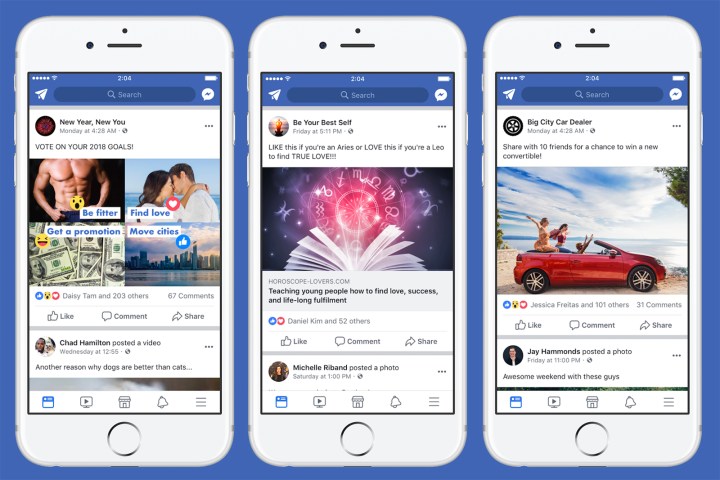
The change begins with downgrading single posts that use engagement bait, a change that starts rolling out this week. But that’s just the start — Facebook says Pages that use these tactics on an ongoing basis will see an even further drop, though the platform is giving these users a few weeks to adapt before rolling out that change.
Engagement bait comes in a number of different forms, but it all boils down to asking for a specific interaction. Facebook’s current algorithms promote posts that have more interactions, which means posts using the tactic often show up in more news feeds. Facebook will soon start downplaying a number of different types of engagement bait, including vote baiting, or asking for a specific reaction in a survey-like post. Posts that ask for likes, shares, tags, and comments will all be placed further down in the news feed by the new algorithms.
Facebook is aiming to eliminate those spam-like posts, so not all posts that ask for reactions will be affected. Posts that ask for advice, recommendations, or help will not be downgraded,
For users who find posts randomly asking for likes, tags, and comments annoying, the change will help clean up the news feed, eliminating some of the posts that have a large number of interactions not because the post is helpful or humorous but simply because they asked for the interactions.
For some Pages and other publishers, the change means yet another algorithm that affects the reach of their posts. Because users are more likely to interact with a post when simply asked, some social media experts recommended the tactic in the past. Now, Pages will have to work to compose posts that gain interactions authentically, not through solicitation.
The news feed update joins a handful of other recent changes Facebook has launched, including eliminating that ticker feed and testing a tool that allows users to post to the news feed but not a profile. Earlier this year,
Editors' Recommendations
- Facebook’s new controls offer more customization of your Feed
- Facebook’s new Feeds tab emphasizes chronological posts
- We now have scientific proof that quitting Facebook makes you less depressed



